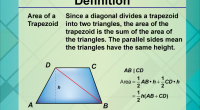Beside gravity, there’s another power that is attempting to push slugs off their way—the breeze.
Like projectile drop, this is anything but a significant issue at short proximities.
Inside 200 yards or somewhere in the vicinity, most rifle shots have sufficient energy to oppose the impacts of wind and travel pretty much directly to their objective.
Beyond that point, however, wind can push shots a few inches or even a few feet off focus at long ranges, an impact known as wind float or windage.
You can imagine wind float like the even form of shot drop. On the off chance that 6.5 creedmoor ammo you point your rifle at an objective 300 yards away, and the projectile hits 6 creeps to one side of where you pointed, the slug had six crawls of wind float (accepting the issue wasn’t with your sights).
Indeed, the two primary factors that decides how well a shot opposes wind float are speed and ballistics coefficient.
Projectiles that are moving quicker have more energy, which permits them to oppose the power of the breeze. Projectiles with a higher ballistics coefficient are better at falling through the air without getting pushed askew.
You can likely think about what the outcomes will be, yet we should look at 6.5 Creedmoor and .308 with regards to wind float, as well.
This information depends on a 10 mph wind blowing opposite to the shooter.
6.5 Creedmoor versus .308 Wind Drift (inches)
6.5 Creedmoor
120-grain Hornady ELD Match
6.5 Creedmoor
147-grain Hornady ELD Match
.308 Winchester 155-grain Hornady ELD Match .308 Winchester 178-grain Hornady ELD-X
Gag (0 Yards) 0 0 0 0
100 Yards 0.7 0.5 0.7 0.7
200 Yards 2.6 2 2.8 2.7
300 Yards 6 4.6 6.6 6.2
400 Yards 11 8.3 12.1 11.3
500 Yards 17.8 13.2 19.6 18.3
600 Yards 26.6 19.5 29.5 27.3
700 Yards 37.7 27.3 41.9 38.5
800 Yards 51.4 36.7 57.3 52.2
900 Yards 68 47.8 76.1 68.8
1000 Yards 87.9 60.7 98.9 88.5
Okay, a couple of fun realities about this graph:
As you would expect, the 6.5 Creedmoor experienced less wind float than the .308 paying little mind to the slug weight. This is because of its more streamlined, high-BC shot.
Unusually, the 120-grain 6.5 Creedmoor and the 178-grain .308 had fundamentally the same as levels of wind float. A genuine illustration of how either a high-BC (on account of the 6.5 Creedmoor) or a high slug weight (on account of the .308) can both counter wind float well.
When looking at the most comparable 6.5 Creedmoor and .308 shots—the two segments in the center—clearly the 6.5 Creedmoor has less wind float than the .308 consistently, and significantly less wind float later around 400 yards.
By and large, the 6.5 Creedmoor experienced undeniably less wind float, which you could say makes it a more exact cartridge.
All things considered, you need to think about this information while taking other factors into consideration.
As a matter of first importance, the various projectiles will have essentially pretty much wind float, as you can see when contrasting the 120-grain 6.5 Creedmoor and the 178-grain .308.
Second, the breeze will not be moving totally opposite to your shots more often than not. Regularly, it will be coming in at a point, which will cause less wind float than sideways wind.
Third, some of the time you might be shooting in conditions with no wind, or in a space where trees, shakes, and slopes block a significant part of the breeze, making wind float even less significant.
In the last examination, then, at that point, don’t judge the .308 too cruelly in such manner. Indeed, it encountered more wind float, however this basically won’t make any difference more often than not except if you’re taking shots at extremely significant distances.
Outline: Unless you’re shooting more than 500 yards, you’re not going to see a significant distinction in wind float between the 6.5 Creedmoor and the .308. Past 500 yards, the 6.5 Creedmoor has fundamentally less wind float than the .308.



